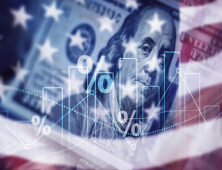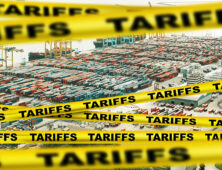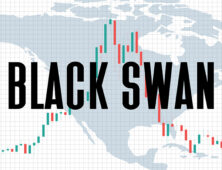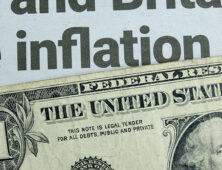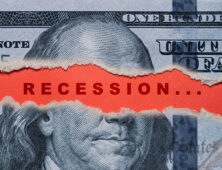Today’s Mortgage Rates in April 2025
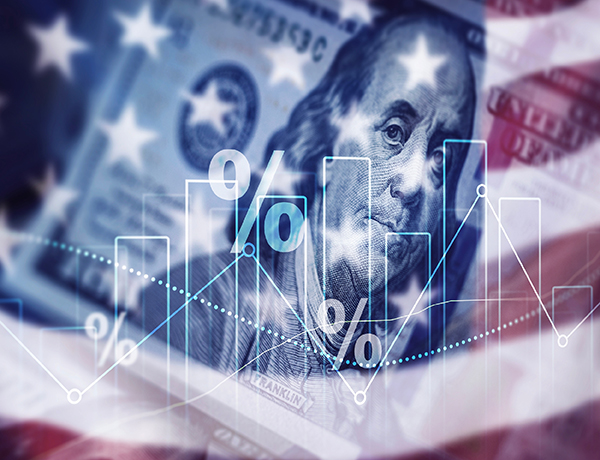
Apr 28, 2025
Until next week — stay smart, stay steady, and remember: your mortgage strategy matters more now than ever.
1️⃣The Hidden Fed Mandate: Protect the Dollar at All Costs
While the Federal Reserve’s dual mandate is well known — full employment and stable inflation — there’s a third, often unspoken mission: preserve the dominance of the U.S. dollar as the world’s reserve currency.
Why does this matter?
Since the trade war escalated, the U.S. dollar has quietly lost value against a basket of global currencies. At the same time, foreign demand for U.S. Treasuries has weakened — especially from former heavyweight buyers like China and Japan. This is a major concern, because global demand for our debt helps keep borrowing costs low and economic power in America’s hands.
Now, here’s the kicker: Rate cuts weaken the dollar further, which makes the Fed reluctant to oblige the Trump administration’s push for looser policy.
Higher rates, on the other hand, defend the dollar’s strength — but at the cost of market pain and rising mortgage rates.
So, while the White House calls for cuts to boost growth, the Fed is quietly fighting a currency war of its own. And yes, it’s creating a tug-of-war that’s destabilizing markets — and pushing mortgage rates higher.
2️⃣Tariff Trouble: The War No One Can Win?
In a dramatic shift, President Trump has begun to ease the steep tariffs imposed on Chinese imports earlier this year. The administration had raised tariffs to an unprecedented 145%, but mounting economic pressures have prompted a partial rollback. Treasury Secretary Scott Bessent acknowledged that these tariffs were “unsustainable” and hinted at de-escalation, though formal negotiations with Beijing remain uncertain.
China, for its part, has responded cautiously. While publicly denying ongoing trade talks, Beijing has quietly exempted certain U.S. goods, such as semiconductors and medical equipment, from its retaliatory tariffs, signaling a willingness to ease tensions without appearing to concede.
Despite these tentative steps, the economic damage is already evident. Ocean-container shipments from China to the U.S. have plummeted by over 60%, disrupting supply chains and threatening industries dependent on Chinese imports. Small businesses, particularly those reliant on seasonal goods, face significant challenges as critical manufacturing windows close.
Economists are increasingly alarmed. A recent Bloomberg survey indicates a 45% chance of a U.S. recession within the next year, up from 30% in March. The International Monetary Fund has downgraded U.S. growth projections, citing the escalating trade war and high policy uncertainty.
The takeaway? Initiating a trade war without a clear exit strategy can have far-reaching consequences, disrupting not only political capital but also lives, jobs, and global economic confidence.
3️⃣Empty Shelves, Rising Prices: Déjà Vu from 2020?
Post-Liberation Day, imports from China have plunged. Port data and freight indexes show a sharp drop in container deliveries, especially on the West Coast. Manufacturing orders are drying up. Shipping volumes are slowing.
If this sounds familiar, it’s because we lived through it in 2020.
Back then, Covid shut down Chinese factories. This time, it’s geopolitics. And the result could be eerily similar: supply shortages at major retailers like Walmart and Target, spiking prices for everyday goods, and pressure on inflation that pushes mortgage rates up even further.
Inflation isn’t just about oil or wages anymore. It’s also about ships, shelves, and strained supply chains.
Rate Outlook: Volatility Reigns Supreme
In the middle of all this uncertainty, mortgage rates are caught in the storm.
Rates remain highly volatile, with intraday swings that make it challenging to know when to lock or float. In recent weeks, we’ve seen rate sheets change multiple times in a single day — a clear signal of just how reactive lenders are to shifting economic headlines.
Now, mortgage rates are flirting with a critical technical level — the 200-day moving average. While floating remains risky given the high volatility, a decisive break beneath this key trend line could open the door to a meaningful move lower in rates.
Until that break is confirmed, locking ahead of additional market swings remains the safer approach for most borrowers.
Final Thought: Stay Nimble, Stay Informed
Markets hate uncertainty — and right now, we have it in spades. From currency wars to container shortages, every headline seems to push rates in a new direction. That’s why weekly insights like this one matter more than ever.
Whether you’re a homebuyer, a seller, or someone waiting for the right time to refinance, we’re here to cut through the chaos — and help you make confident, informed decisions.
Apr 21, 2025
Bottom Line: Risk Remains, But So Does Opportunity
The current market is one of the most unpredictable in recent memory. With stocks swinging wildly, global trade in flux, and real estate sentiment shifting, now is not the time for complacency.
🔹 Locking in your mortgage rate now could protect you from higher costs later.
🔹 But be alert—any Fed pivot or de-escalation in tariffs could create a surprise rate dip.
🔹 Watch closely. React quickly. The next opportunity might be just a headline away.
1️⃣Financial Markets Rattled by “Retribution Day” Tariffs
We’re entering a new era of global trade policy—one marked not by diplomacy, but by retaliation. Following what’s now been coined “Retribution Day,” the U.S. and key trading partners have implemented sweeping tariffs that are shaking the foundation of international commerce. With a 90-day reprieve clock ticking, markets are struggling to price in the full impact.
Even the Federal Reserve appears blindsided by the scale and swiftness of the changes. Their models didn’t account for this level of disruption. If the Fed didn’t see it coming, neither did corporate America. We’re now entering a phase where producers must absorb higher input costs or pass them on to consumers—an equation that feeds inflation and squeezes corporate profits at the same time.
Manufacturing stocks have been hit hard. The Dow Jones Industrial Average is down nearly 9% from its recent high, and tech, which relies on globally sourced components, is facing a cold front after a record-setting Q1.
2️⃣Zillow’s Shock Forecast: Home Prices to Fall
In a dramatic pivot, Zillow has now forecasted a decline in national home values from March 2025 through March 2026—a rare prediction from a platform typically optimistic about real estate. This shift reflects the harsh economic sentiment that’s emerged in just the last few weeks.
Why does this matter? When people see the value of their stock portfolio drop by 10–15%, they tighten their wallets. Trillions in paper wealth have been erased in less than a month. When wealth contracts, so does spending—and that includes big-ticket items like homes.
We’re already seeing early signs of buyer hesitation. If prospective buyers believe homes will be cheaper a year from now, demand drops today. This psychology can become self-fulfilling and dangerous. And remember: the Fed does not want to see widespread home depreciation. That leads to reduced consumer confidence, falling renovation and retail spending, and eventual job losses in real estate-adjacent industries.
3️⃣Trump vs Powell: The Central Bank Smackdown
The White House is once again at odds with the Fed. President Trump’s recent jab—”Powell’s termination can’t come soon enough”—signals an intensifying feud that’s becoming a headline risk in and of itself.
Fed Chair Jerome Powell is in a no-win situation. He must choose between tackling inflation (which may rise due to tariffs) or cutting rates to boost a slowing economy. Welcome to stagflation, the worst of both worlds: rising prices paired with sluggish growth.
With the next Fed decision coming on May 7th, expect fireworks. If Powell chooses to hold or even raise rates, markets may tumble further. If he cuts, he risks inflation running hotter than expected. Either way, volatility will likely spike.
Apr 17, 2025
Mortgage Rate Outlook: What Comes Next
The past week was a vivid reminder of how quickly rates can rise. A trade agreement with China or an intervention by the Fed could bring rapid relief. But for now, caution is warranted. If you have a loan to lock, the safe strategy is to lock now. If you’re floating, keep a close eye on the market—and be ready to act at a moment’s notice.
1️⃣A Financial Cold War with Global Consequences
Escalations in the global trade war are shaking investor confidence and sowing doubt among corporate leaders about the future of the economy. The uncertainty surrounding potential policy shifts and retaliatory measures has already impacted global stock markets and driven volatility in U.S. interest rates.
But the most potent threat—what could be considered a financial “nuclear option”—still lies dormant in the hands of China, Japan, Canada, and the European Union. These countries collectively hold a massive volume of U.S. Treasuries and mortgage-backed securities. Should they choose to sell off their positions in large quantities, it could trigger a devastating chain reaction—seizing up U.S. financial markets in a way even the Federal Reserve may struggle to contain.
2️⃣Cooling Inflation… For Now
March inflation data revealed some welcome signs of cooling. The Consumer Price Index (CPI) declined by 0.1%, while the core CPI—excluding food and energy—rose just 0.1%, better than the 0.2% increase markets had anticipated. This suggests that, for now, inflationary pressures are softening.
However, this report does not reflect the new tariffs recently enacted on imported goods. As these tariffs take effect and ripple through supply chains, we anticipate upward pressure on prices. Retailers will likely pass those costs along to consumers. Just as inflation was nearing the Fed’s 2% target, we could see it spike back up—potentially reaching 5%—in the months ahead.
3️⃣Mortgage Rates Surge, Spring Market Stalls
Mortgage rates surged sharply over the past week, with City Creek’s quoted rate jumping from 5.99% Monday morning to 6.75% by week’s end. This swift climb has put a damper on the spring homebuying season, pricing some buyers out and causing many others to hesitate. The instability in decision-making around trade policy and tariffs has amplified uncertainty in both the job market and corporate planning. Business owners crave clarity—and in times of fear and unpredictability, long-term investments and hiring decisions are often delayed.
Apr 07, 2025
Mortgage Rate Outlook
Mortgage rates are climbing again to start the week. While a strong technical ceiling may help prevent rates from breaking much higher, the risk of floating in this market remains high. With economic and geopolitical uncertainty running hot, locking in a rate—especially for near-term closings—continues to be the safer move.
1️⃣ A New Black Swan? Global Trade Shake-Up Begins This Week
Every so often, a “black swan” event disrupts the global economy. The last major one was the Covid-19 pandemic. This week, the spotlight turns to international trade as sweeping new tariffs are set to take effect on Wednesday. What many initially saw as a negotiation tactic has turned into a full-fledged policy shift, catching global markets off guard. The finalized tariff levels are far higher than anticipated, leading to a swift and severe market reaction.
Trillions in global market value have already been erased, and mortgage rates have been on a rollercoaster—initially falling as investors rushed to safety, but now rebounding back to pre-tariff levels. Volatility is likely here to stay.
2️⃣ Recession Risk Rising as Trump Holds the Line
Recession odds are climbing fast. Many economists now view a recession as imminent if President Trump sticks to his tariff plan. Though internal advisors and global leaders are urging him to reconsider or at least delay the rollout, Trump remains steadfast. Reports indicate that some within the administration underestimated the global economic blowback.
So far, Trump has doubled down, stating there is “zero chance” the tariffs will be delayed or revised. Markets are now being forced to reprice risk based on the new reality—one that could significantly slow growth in the coming quarters.
3️⃣ Jobs Report Beats—But the Good News May Be Short-Lived
On a more positive note, last week’s labor market data provided a temporary boost. The Bureau of Labor Statistics reported 228,000 new jobs added in March, far exceeding expectations of 150,000. However, many analysts believe this could be the last strong report before weakness sets in. High-profile layoffs, such as those at DOGE, haven’t yet been fully reflected in the data.
Additionally, pending cuts in federal jobs and corporate cost-cutting—driven by falling stock prices—are expected to weigh heavily on future reports. The next six months could usher in a new phase of economic headwinds.
Mar 31, 2025
Rate Watch: 10-Year Treasury Facing Resistance
Yields on the 10-Year Treasury are currently hovering near their 200-day moving average—a historically strong floor. Breaking below this level would take significant downward momentum, which seems unlikely in the short term. For now, the conservative move is to consider locking in rates.
1️⃣ Home Values Continue to Climb
The Case-Shiller Home Price Index, a leading measure of home values across the U.S., reported a 4.1% annual gain over the past 12 months. For a homeowner with a $500,000 property, that’s a $20,500 increase in equity—roughly $1,708 per month.
This kind of appreciation represents real wealth creation and is a powerful argument in favor of homeownership. While renting may offer flexibility, it doesn’t build equity. And as appreciation compounds year over year, owning a home becomes even more advantageous over time.
2️⃣ Inflation Runs Hotter Than Expected
The Fed’s preferred measure of inflation—the Personal Consumption Expenditures (PCE) index—came in hotter than anticipated for February. The Core PCE, which excludes food and energy, rose 0.4% month-over-month, bumping the annual rate to 2.8% from 2.7%. This upward trend in inflation makes it harder for the Fed to justify rate cuts anytime soon. Adding to the pressure, impending tariffs could push consumer prices even higher, eroding purchasing power and further complicating the economic outlook.
3️⃣ Tariffs Could Trigger a Stagflation Storm
One of Wall Street’s quiet fears is how consumers will react to the next wave of tariffs—particularly the potential 25% tax on imported cars. Higher prices may cause buyers to delay purchases, especially on big-ticket items like vehicles, leading to reduced demand. If this trend spreads across sectors, we could see a ripple effect of job losses and reduced consumer spending.
When rising prices collide with economic slowdown, it creates a perfect storm known as stagflation—one of the most damaging scenarios an economy can face.
Mar 17, 2025
Mortgage Rate Outlook: Floating, But Watchful 🔄📉
Although mortgage rates have been pressured upward in the past week, there remains a strong ceiling that has held rates from losing too much ground. While the risk of floating is elevated, if you are able to monitor the markets closely and are prepared to lock, there is no immediate risk at this moment.
1️⃣ Encouraging Inflation Data, But Mortgage Rates Rise
February brought some positive news on the inflation front, with the Consumer Price Index (CPI) increasing by just 0.2%—a sign that inflation remains relatively contained. Under normal circumstances, this would be a catalyst for lower mortgage rates. However, the opposite occurred, with rates ticking up after the announcement.
The primary culprit? Tariff policy changes and growing fears of a trade war, which could drive inflation higher in the months ahead. Investors are now bracing for the release of the Fed’s preferred inflation measure—the Personal Consumption Expenditures (PCE) Index—on March 28. A hotter-than-expected report could further delay potential rate cuts from the Federal Reserve.
2️⃣ Fed to Hold Rates Steady—For Now
On Wednesday, the Federal Reserve will wrap up its FOMC meeting, where they are widely expected to keep interest rates unchanged. The central bank is in wait-and-see mode, as the economic impact of new tariffs and trade policies remains uncertain.
A key question is how American consumers will respond. If they continue buying imported goods at higher prices, the inflationary impact could be muted, as tariff revenue is collected by the government rather than circulating through the broader economy. However, if consumers shift toward more expensive U.S.-made alternatives, inflation could accelerate. Compounding the risk, foreign buyers may reduce their purchases of American exports, further weighing on economic growth.
This delicate balance underscores why trade wars rarely deliver the intended economic benefits. Instead, they tend to create volatility and unintended consequences.
3️⃣ Recession Risks Are Rising
Concerns about a looming recession continue to mount, as businesses report slower growth due to tariff uncertainty and weakening consumer demand. Notably, these economic headwinds are emerging before tariffs have even been fully implemented—suggesting more pain could be on the horizon.
One underappreciated risk is the delayed impact of government spending cuts and contractor layoffs. Many federal workers and contractors facing job losses won’t feel the financial strain for another 6-12 months, at which point the economic slowdown could become more pronounced. As consumer spending contracts, the effects will ripple through the economy, further dampening growth.
While recessions are painful in the short term, they can also serve a critical role in restoring long-term economic stability. The key question now is whether the Federal Reserve will be forced to respond with rate cuts—or if inflation concerns will keep them sidelined.




